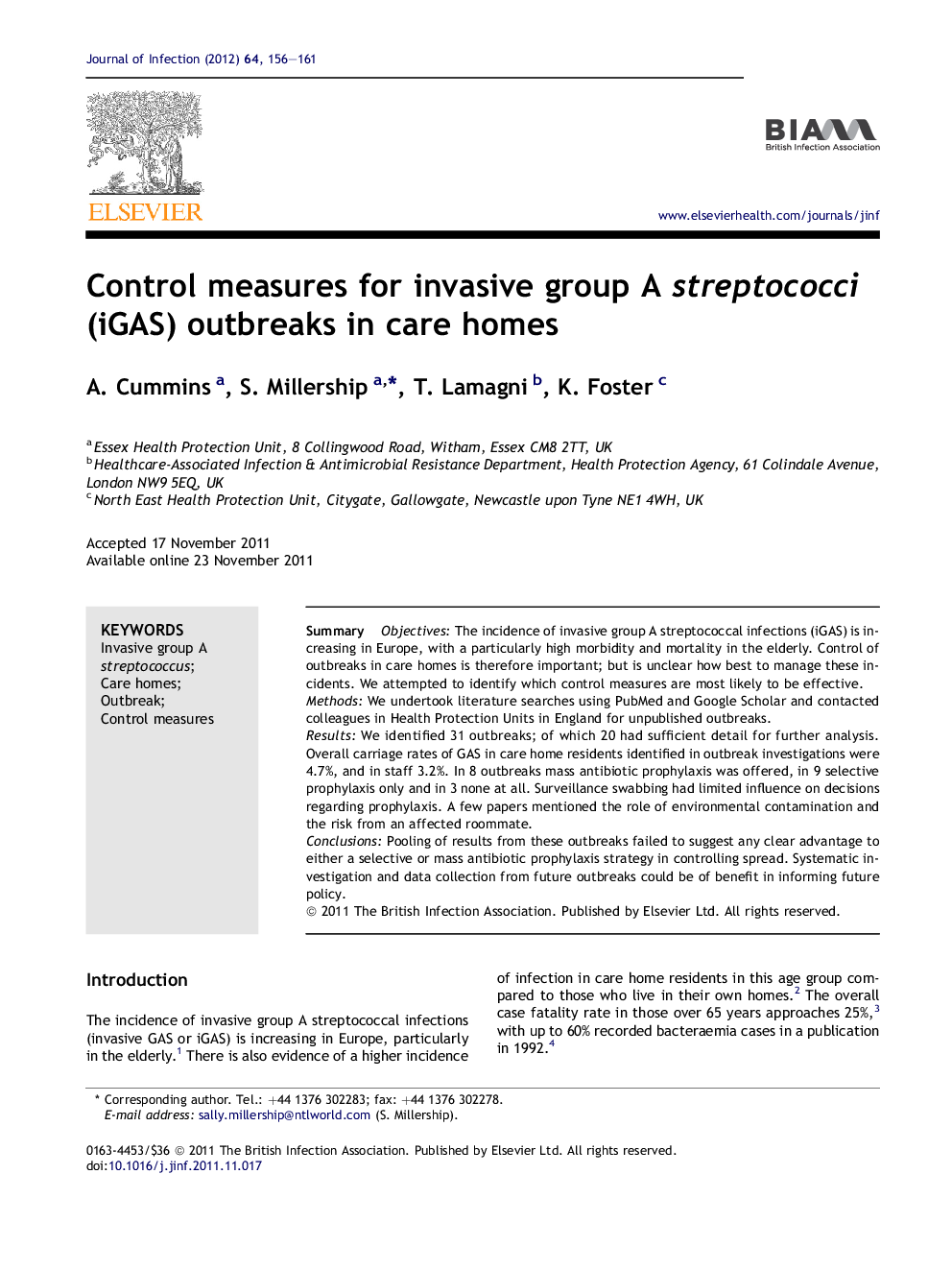| Article ID | Journal | Published Year | Pages | File Type |
|---|---|---|---|---|
| 3375224 | Journal of Infection | 2012 | 6 Pages |
SummaryObjectivesThe incidence of invasive group A streptococcal infections (iGAS) is increasing in Europe, with a particularly high morbidity and mortality in the elderly. Control of outbreaks in care homes is therefore important; but is unclear how best to manage these incidents. We attempted to identify which control measures are most likely to be effective.MethodsWe undertook literature searches using PubMed and Google Scholar and contacted colleagues in Health Protection Units in England for unpublished outbreaks.ResultsWe identified 31 outbreaks; of which 20 had sufficient detail for further analysis. Overall carriage rates of GAS in care home residents identified in outbreak investigations were 4.7%, and in staff 3.2%. In 8 outbreaks mass antibiotic prophylaxis was offered, in 9 selective prophylaxis only and in 3 none at all. Surveillance swabbing had limited influence on decisions regarding prophylaxis. A few papers mentioned the role of environmental contamination and the risk from an affected roommate.ConclusionsPooling of results from these outbreaks failed to suggest any clear advantage to either a selective or mass antibiotic prophylaxis strategy in controlling spread. Systematic investigation and data collection from future outbreaks could be of benefit in informing future policy.
